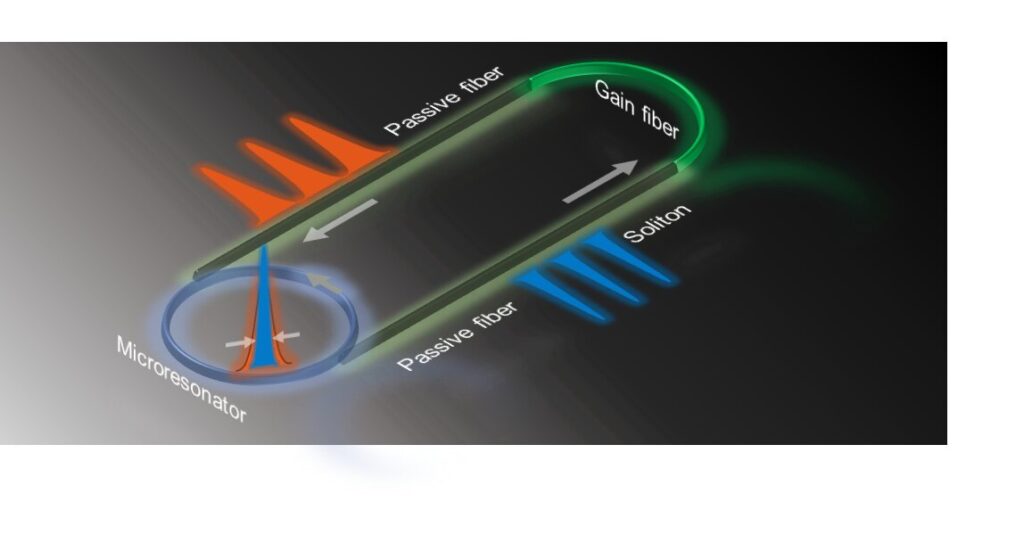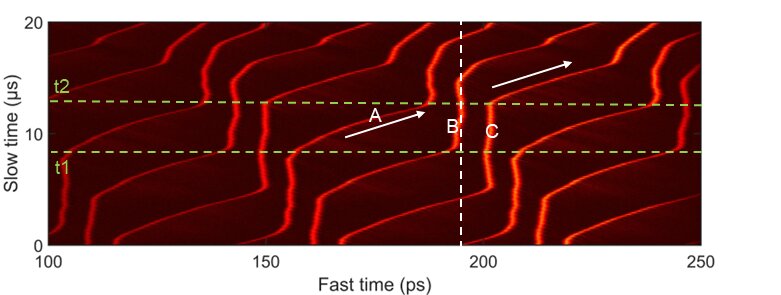
Kerr microcombs are sets of equidistant spectral lines generated by pumping a high-Q microresonator with a resonant continuous-wave single-mode laser. They have arguably created a new field in cavity nonlinear photonics, with a strong cross-fertilization between theoretical, experimental, and technological research.
Despite the great success of Kerr microcombs, issues such as the self-starting mechanism, low mode efficiency, and low output power cannot be fully addressed by conventional Kerr microcomb designs. On the other hand, by nesting a passive nonlinear microresonator in an active fiber laser cavity, the recently-demonstrated laser cavity soliton (LCS) microcomb shows great potential to solve the problems of conventional Kerr microcombs.
In a new paper published in Light: Science & Applications, a team of scientists led by Professor Shu-Wei Huang from University of Colorado Boulder and co-workers theoretically and experimentally study the dissipative soliton generation and real-time dynamics of this new member to the microcomb family.
“We bring theoretical insight into the mode-locking principle of this new LCS microcomb architecture. We studied the dependence of soliton properties on microresonator parameters and predicted the existence of chirped bright dissipative soliton with flat-top spectral shape, a long-sought-after feature for high-capacity optical communication but not attainable in the conventional microcomb architecture,” the scientists say.
“Based on our proposed experimental guidelines, we demonstrated a self-starting LCS microcomb with low noise, high mode efficiency, and high output power. The LCS output power is as high as 12 mW with the mode efficiency up to 90.7%, both representing orders-of-magnitude enhancement to conventional Kerr microcombs. Equally important, we achieved the record low fundamental comb linewidth of 32 mHz and repetition rate phase noise of -137 dBc/Hz at 1 MHz offset frequency,” they write.

“Moreover, we utilized a time magnifier to ‘slow down’ the ultrafast nonlinear cavity dynamics by 70 times so soliton formation and interaction dynamics can be studied with state-of-the-art optoelectronics. We were particularly excited to observe the intriguing soliton Newton’s cradle phenomenon with the time magnifier for the first time,” they added.
“The study opens new avenues to compact, high-efficiency and self-starting microcombs for real-world applications and highlights the importance of time magnifier for real-time ultrafast dynamics,” the scientists said.